7 Reasons You Keep Getting Lice and How to Stop Lice From Coming Back
Discover the reasons you keep getting lice and more importantly, how to stop it from coming back.
You discover head lice on you or your kid, then use a lice treatment or home remedy to try to kill it, do hours of housecleaning, and loads of laundry – only to discover lice is back again a few weeks or even days later!
Why does lice come back? Or are they getting it back from something or someone?
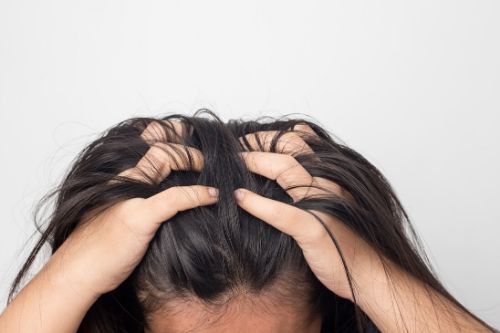
Answer from a Lice Expert:
Most websites or products will say things like, “When lice come back, it is usually because you did not follow the directions carefully enough.” You and I both know that that's not true.
In this article, I explain the actual reasons people get stuck in this never-ending lice cycle, and it is NOT because they aren’t following the instructions.
More important than that though, let's talk about how to stop lice from coming back, ever again.
Let me introduce myself...
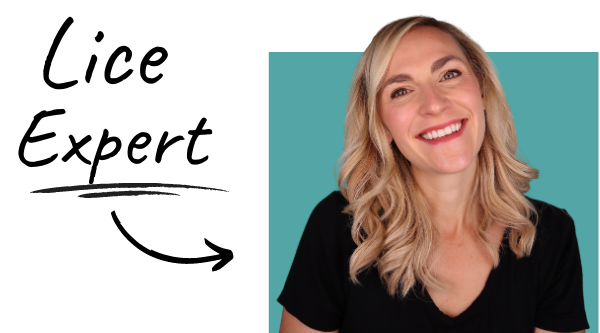
Hi there! I'm Theresa, I'm a lice expert, lice coach, and Registered Nurse. I help people with lice every day! You can get rid of lice in ONE DAY at home by using the same proven professional technique that I use in my lice center.
Just follow the step-by-step videos and be done with lice by the end of the day.
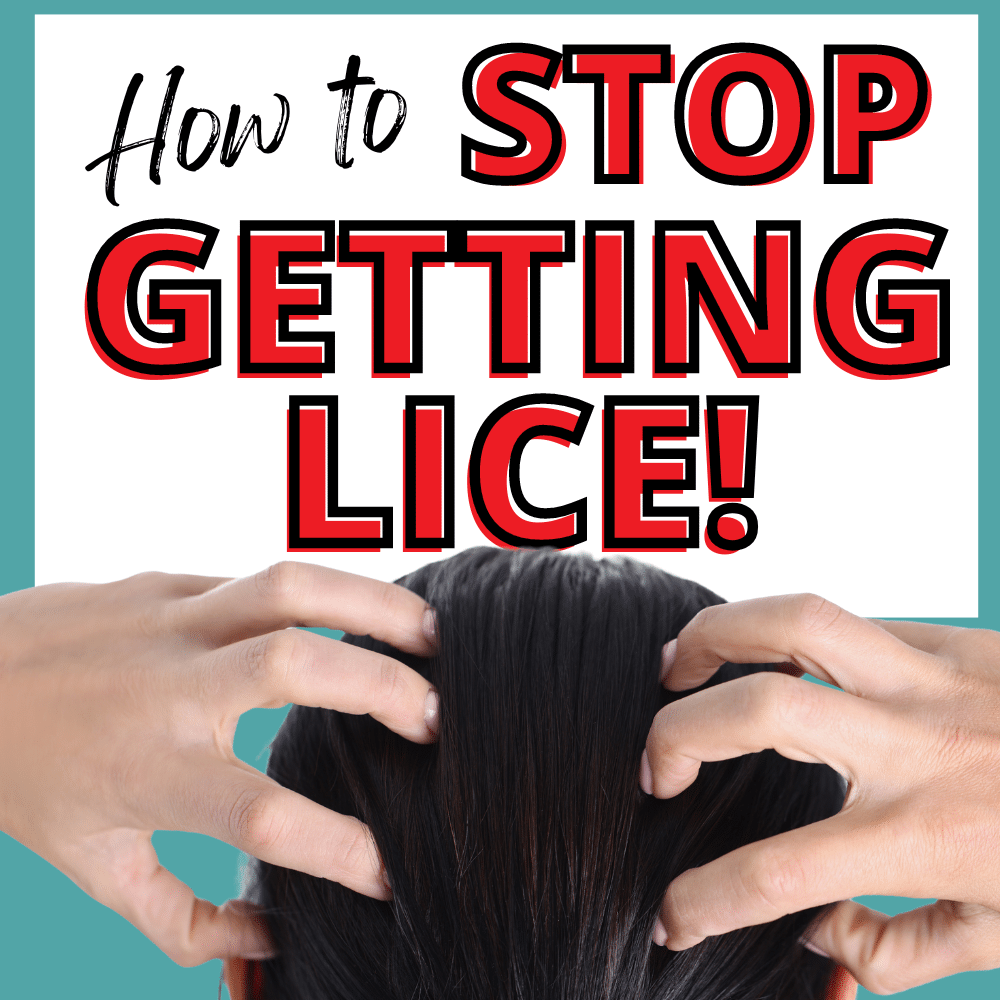
Reason #1
Super Lice
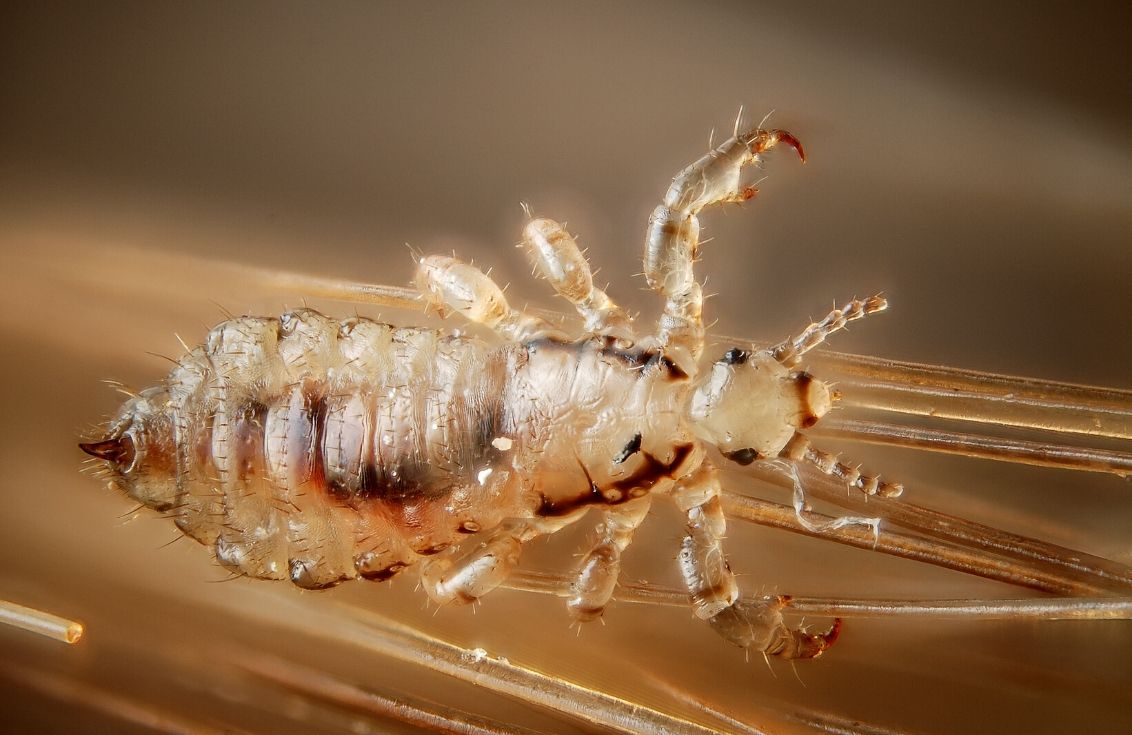
If you have gone through multiple rounds of lice treatment and lice keep returning regardless, you have the unfortunate pleasure of hosting super lice.
Super lice look and act just like ordinary head lice. They are the same size, shape, and color, making it so you can’t tell them apart just by looking at them. The difference between super lice and regular lice is that super lice have a mutation that makes them resistant to almost all over-the-counter and prescription lice treatments.
If you have gone through multiple rounds of lice treatment, but lice keep returning, you have super lice.
These super lice become stronger and more resistant every time you use one of these ineffective lice treatments on your child’s head.
Here’s how:
When you use an over-the-counter or prescription treatment, you kill the weakest head lice, but the strongest lice live on. These strong lice then breed together and produce more lice that are even stronger than the previous generation. Every time you use one of these pesticide treatments, super lice become more “super” because you kill the weak ones and leave the strongest lice left to multiply.
Traditional Lice Treatments Don’t Kill Super Lice
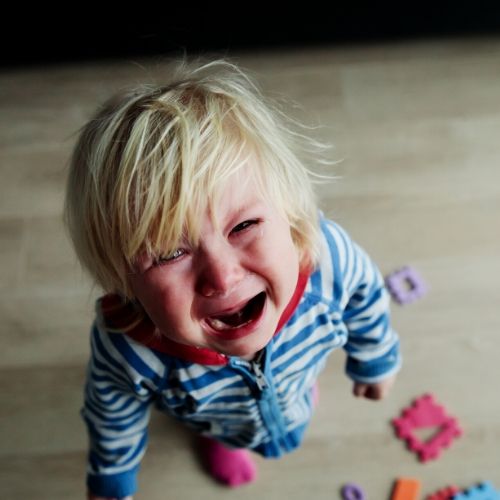
For years, the go-to lice treatments were over-the-counter pesticides.
Unfortunately, many people run to the drug store and grab these same pesticides without knowing that all of the treatments we used twenty years ago are no longer effective against the new strain of lice (super lice).
Name brand and generic treatments use pesticides as the main “lice killing” ingredients and do not kill super lice or their eggs. Prescription lice treatments use these same pesticides, just in larger doses or more frequently. Neither of them work!
Recent studies show that up to 98% of lice and super lice are now resistant to these types of treatments, so it doesn’t matter the dosage or how long you leave them on. The treatment only kills the weakest lice, and the strongest super lice continue to breed and multiply.
Unfortunately, these products are heavily advertised and recommended by folks without a lot of hands-on lice knowledge. These products were indeed effective forty years ago, but since lice have evolved, these products are no longer useful for killing lice.
Since pesticides are no longer adequate to eliminate lice, it can be challenging for most people to navigate the lice shampoo world. There are hundreds of different lice products, and each one of them claims on the box to effectively kill lice.
The truth is that many statements on the boxes of lice treatments are very misleading.
As a lice expert and lice coach for several years, I’ve tested and studied just about every lice treatment out there, and the most “popular” treatments are among the very worst, so don’t be fooled!
If you want to get rid of lice quickly then stop messing with lice kits and home remedies. Instead, check out my step-by-step video system.
Why Is It So Hard to Get Rid of Super Lice?
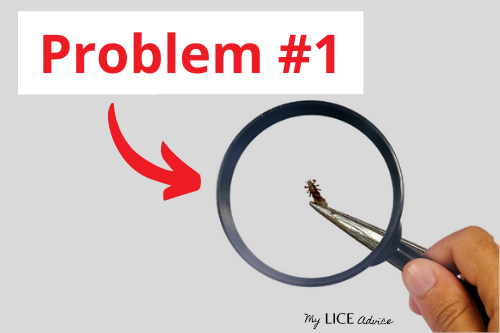
Problem #1 is the Lice Bugs-
As previously explained lice have become immune to everything that used to work in the past. Perhaps you remember your mom using a typical lice treatment or mayonnaise and that doing the trick. The new strain of head lice is no longer killed by those treatments, that’s why lice today are termed by people, “super lice,” because they are immune to those treatments.
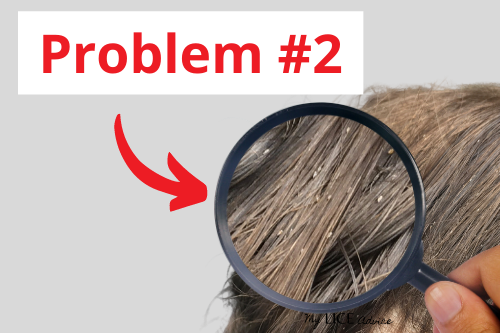
Problem #2- Is the Lice Eggs (also known as nits)
Most people struggle with lice because they focus all of their attention on killing lice bugs. Guess what? Super lice also have super eggs, which I'm going to talk about in the next section.
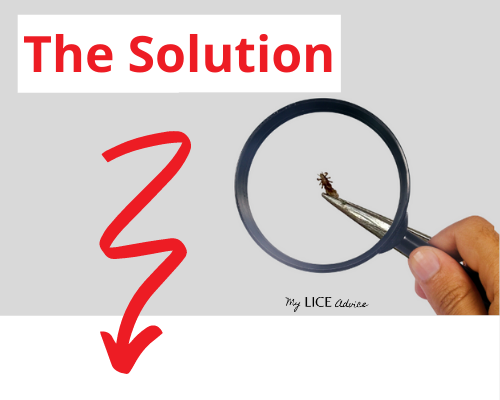
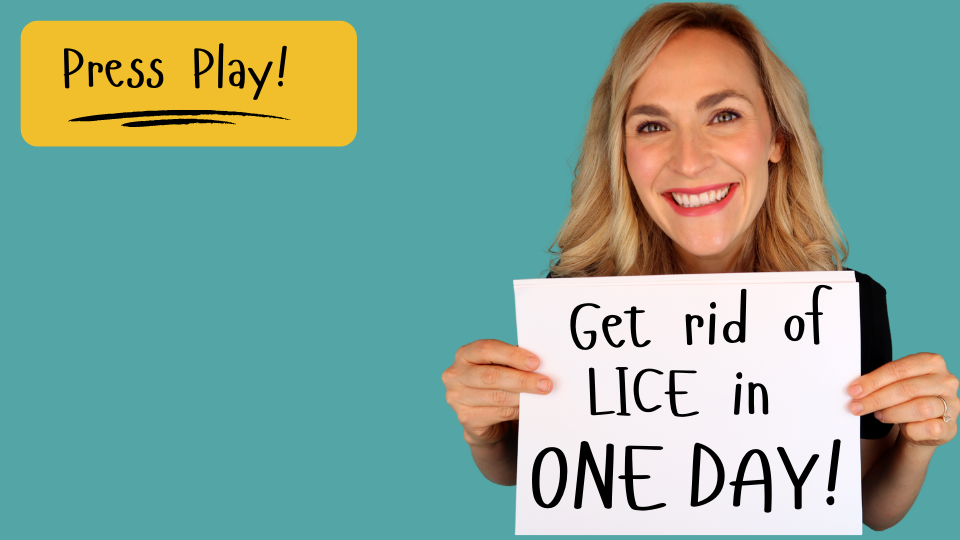
Alternatives
You’re not going to fix your super lice problem using traditional lice treatments, there's no question about that. The best solution is following along with me in the step-by-step video system. But, if you want to try to do it on your own then I won't judge...
Your other option is to use a more “natural/pesticide-free” lice treatment, but none of these are 100% effective at killing super lice either. These include enzyme lice treatments or other plant-based treatments. Or, you can use one of the home remedies I talk about in this article, but again, even the very best home remedies usually only kill about 80% of lice. These are the weaker lice, leaving the stronger lice to survive and breed, creating stronger and stronger super lice. So, you still are dealing with the same problems.
Reason #2
Lice Eggs
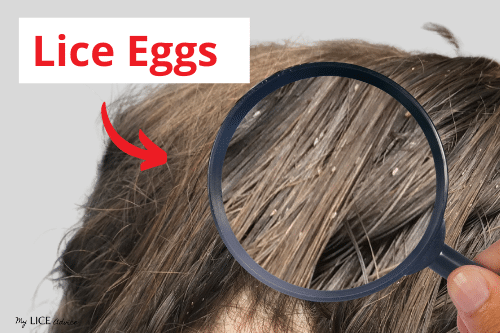
Lice eggs and nits are the same thing.
To start off let's get something straight... Nits and lice eggs are the same thing! Don't make this more complicated then it needs to be. The two words (nits and lice eggs) will be used interchangeably in this article.
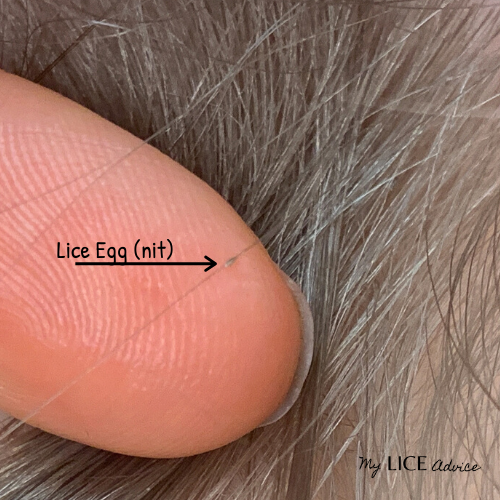
Another unique thing about super lice is that lice treatments do not kill their lice eggs or prevent them from hatching. Thirty years ago, you could use a lice treatment and the lice eggs may not hatch, but today’s lice lay very resistant eggs that will absolutely hatch after a lice treatment.
If you focus only on killing lice and not the eggs, you will find yourself stuck in an endless lice cycle because new lice keep hatching from the eggs that weren’t removed from the head.
Here’s what this cycle looks like...
You’ll think you’ve gotten rid of lice, but the lice eggs in the hair hatch within a few days, and, shortly, those lice begin laying eggs. Within a few weeks, you have a full infestation all over again. You go around and around in this circle of “getting lice back” from yourself.
Another Mistake People Make with Lice Eggs
I find that one of the big reasons people struggle so much with lice eggs is that they are really hard to spot AND most people don't know what they really should be looking for... So, let me show you.
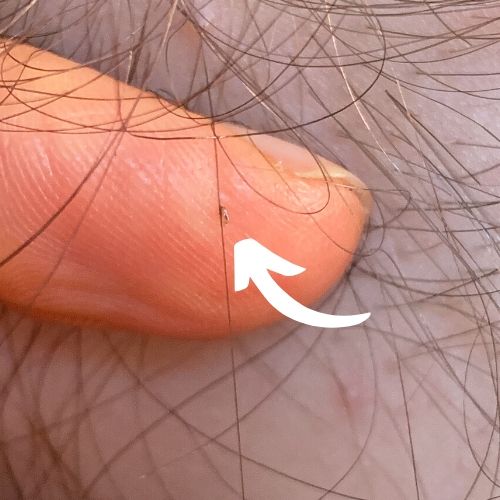
Lice eggs are tiny (about the size of a poppyseed), and they blend in pretty well with hair. If you aren’t looking closely, you are likely to miss them. Lice eggs and dandruff are often mistaken for one another, but some of the key differences are that lice eggs are tear-drop shaped and glued to the side of the hair strand.
The tell-tale sign that what you are finding is a nit is that a nit cannot be flicked, blown, or brushed away. Aside from a high-quality lice comb, the only way to remove a lice egg from the hair strand is to squeeze it between two fingers and manually drag it down the entire hair strand.
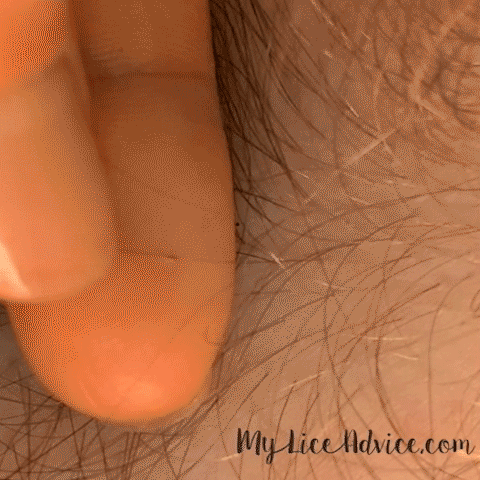
Are the Lice Eggs/Nits Alive or Dead?
There really isn't a way to tell whether or not lice eggs are alive or dead. What you can tell is this:
- Whether or not they are hatched (meaning they no longer have a bug inside, therefore are no longer a threat).
- Whether or not they are "not yet" hatched (meaning there is still a bug inside the egg, therefore they are a threat).
Here's the way to tell the difference:
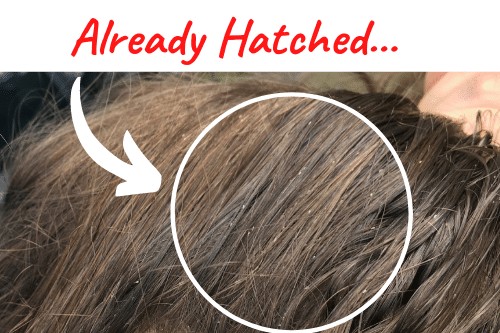
White/Clear Nits
= Hatched
Once lice eggs are hatched they are translucent/clear in color. For those with dark hair, like the picture above, those eggs appear white in the hair.
Think of lice eggs like any other egg... once a lice bug hatches and leaves the egg all you are left with is a shell. That's what you're seeing when you see white lice eggs/nits in the hair. You are seeing an old, left over shell that is glued onto the hair, there is no bug inside of "white" lice eggs/nits. (Unfortunately those white eggs/nits won't "fall off" because they are glued to the hair strand).
Since there is not bug inside those old white lice eggs are no longer a threat.
Brown Lice Eggs
= Not Hatched
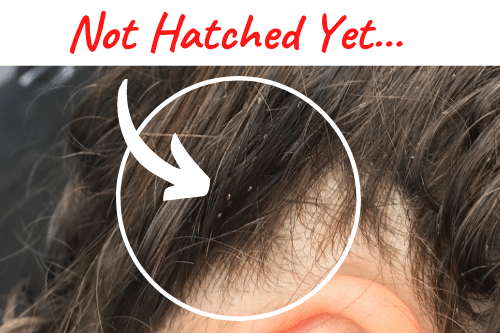
Dark lice eggs (brown or black) are your BIGGEST threat. Many mistakenly believe that these lice eggs are "dead" when the opposite is true!
When lice eggs are first laid they are a light golden color, but as the lice bug in the egg grows the darker the lice egg becomes. Think of lice eggs like bananas...the darker they are the "riper" they are. When lice eggs are dark brown or black they are "very ripe" and are just about to hatch!!
Do Lice Eggs Change Color After They Die?
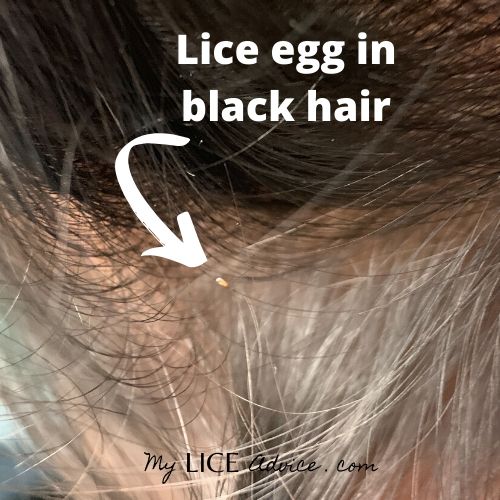
Unfortunately, many mistakenly believe that dark brown lice eggs are dead, so they don't worry about removing them from the head. As was just explained in the paragraph above dark lice eggs are NOT dead. The opposite is true! The darker the lice egg, the closer it is to hatching. If you find dark lice eggs in the hair, then you can plan on those eggs hatching within just a day or two.
I'm going to repeat this one more time clearly...
Lice eggs DO NOT turn black/brown because they are dead.... They change color (brown/black) because they are getting closer to hatching!
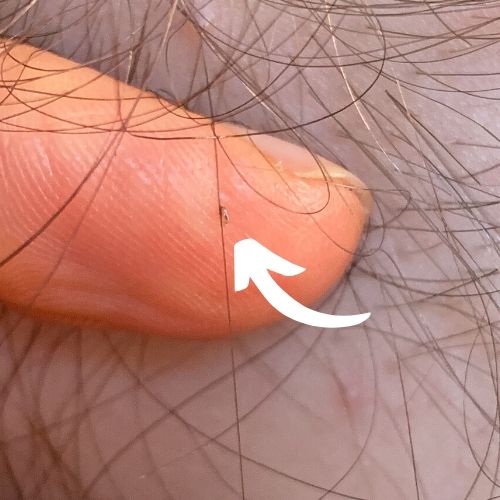
How Do You Kill Lice Eggs?
Some lice kits claim to kill lice eggs. In my opinion, this is EXTREMELY misleading. Some pesticides kill a few lice eggs (I'm talking about a very small percentage of eggs on the head). And guess what? It only takes two lice eggs (one male and one female) to hatch and re-infest your child all over again! So please don't believe the lie that lice kits kill lice eggs, they do not.
After using a lice comb with little success, many people resort to “nit-picking” to try to get all of the lice eggs out of the hair. Nit-picking is manually removing individual lice eggs from the hair with your fingers. It is incredibly time-consuming, tedious, and overwhelming. Sadly, most parents that spend 6-12 hours “nit-picking” and believe they have removed every nit inevitably miss some, and just two nits means staying trapped in this lice cycle again and again.
Killing and removing all of the lice eggs from the head is one thing I cover in detail in the step-by-step video system. The system typically takes about 2 hours to complete from beginning to end on your child. But let me tell you, it'll save you hours and hours of nit-picking and treating and retreating for lice eggs.
The Very, Very Long Solution To Lice Eggs
Many people struggle with lice for weeks or months trying one lice treatment and home remedy after another. I don't want this to be your story, so let me get you on the right track. The best way to get rid of lice is by doing a professional technique which I teach in my step-by-step videos. If you're going to go another way then plan on being extremely disciplined and focused on lice for at least 3 weeks.
Why so long? Because, although many lice eggs hatch in 1-2 weeks, different studies have shown that lice eggs can hatch anywhere between 4 days and 21 days, depending on the temperature and other factors. Some people have the idea of just "retreating" over and over again in hopes to kill the eggs as they hatch. But, that seldom works for the reasons stated above (super lice, super lice eggs, and hatching in a wide variety of times).
Reason #3:
It’s Passing Back and Forth in the Family
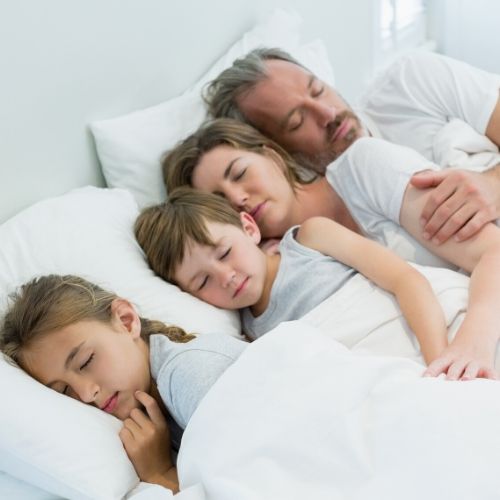
Lice are very contagious, and even more so among family members. If one child in the family has lice, the chances of a sibling getting lice are estimated to be as high as 80%!
If you’ve checked all of your children and think that only one of your many children has lice, you are usually wrong.
It’s common that just one child has a serious case of head lice while the others are in the beginning stages. Head lice in the beginning stage are often missed because there are only one or two lice and a few lice eggs in the hair.
Usually parents focus all of their attention on just one of their children because they think the others are in the clear or they will be able to stop lice from spreading if they concentrate on killing all the lice on that one kid. However, if one of the other children in the family has head lice (even only a couple nits), they’ll just give it right back to their sibling.
I know I’m gonna make your head itch (no pun intended), but in my experience, moms end up getting head lice from their children about 50% of the time as well. So, consider that maybe YOU could be the one giving lice back to your children. Save yourself a lot of hassle and make sure you get yourself checked out as well.
Reason #4:
Timing Is Everything
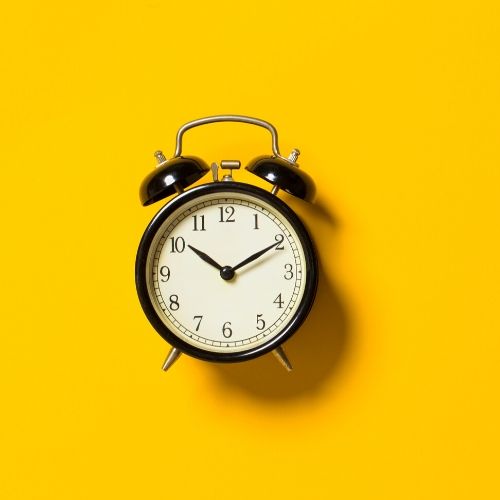
Many people believe they can use a lice treatment and then just retreat a week later and it’ll take care of their lice problem. They are wrong!
People get this bad idea is because many lice treatment kits say to re-treat a week later (again, this is BAD information). This makes you think that all eggs must hatch at that 7 day mark (again, not true).
Studies show that lice eggs can hatch anywhere from 4 to 21 days. Many eggs hatch around the 10-day mark, but a lot of them hatch earlier, and several hatch later. So, obviously if you "retreat" at the 7-day mark you'll miss several bugs hatching. And then those bugs will just start the vicious cycle all over again.
Skip the Retreatments
Many lice treatment kits say to re-treat a week later, but that doesn't work, because as I explained lice eggs can hatch anywhere from 4 to 21 days, depending on the temperature and climate of your head.
Instead of treating and then retreating over and over, I would personally just kill and remove all the eggs in one day and be done with it. Wouldn't you rather do that too? Lice treatments that tell make you "retreat" over and over again don't really work. Because if you have SUPER LICE then it doesn't matter how many times you re-treat, it'll never take care of the problem because it won't ever kill all of the bugs.
The best way to get rid of lice is to forget about treating and retreating and instead tackle both lice bugs and lice eggs at the same time in the same treatment. That's what lice professionals do. That's what I show you in the step-by-step videos.
Follow the videos and you’ll get rid of lice fast (in ONE DAY) and you won't need to "time" your re-treatments because there won't be any re-treatments necessary.
Reason #5:
You Keep Getting It From a Close Friend

90% of head lice is passed directly from head to head. Lice spread among close friends for the same reason they spread among siblings: a lot of head to head contact. The chances of hugging, snuggling, whispering in each others’ ears, and even bumping heads is much higher among your child and their close friends.
Think about your child and her best friend. Do they...
- Hug each other when they see each other or before they leave?
- Whisper in one another’s ears?
- Tumble/wrestle together?
- Look at video screens such as a tablet or phone together (heads touching)?
- Watch movies together on a couch?
These are all prime times for head lice to spread.
The Solution: Tell Your Close Friends
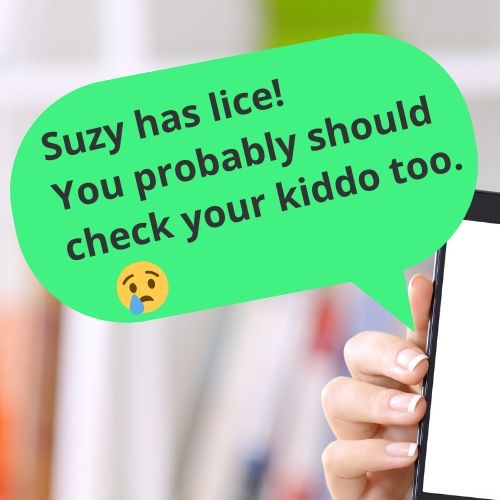
Whether your child got lice from her best friend or your child gave lice to her best friend really doesn’t matter. In the end, you want the same thing: no more head lice! Tell other parents to check for head lice and get rid of it so they don’t spread it back to your child.
A call or text to your child’s best friend can look something like this:
“Hi, this is Bailey’s mom. I’m just letting you know that Bailey has head lice. You’ll probably want to check Sarah because they spend so much time together.”
You don’t need to feel embarrassed or ashamed about reaching out in this manner. Parents will feel grateful that you gave them a heads’ up, and you’d also want to know if someone your kid spends a lot of time with had head lice.
I talk about lice prevention in-depth in the step-by-step videos because the goal is to gain the knowledge and skills you need to prevent a lice infestation like this from happening ever again. I also wrote an article on lice prevention, you can check that out here.
Reason #6
It's Coming Back from School

After you have taken care of your own children and contacted your child’s closest friends, many people worry that their child will pick up lice again from school. This is a possibility, but it is less likely. Because lice is spread head-to-head in most circumstances, the chances of getting lice again from going to school isn’t very high.
Solutions for Prevention
However, if many children at your child’s school have lice and you are concerned she is getting it there, here are some things you can do to decrease your chances of your child getting lice back from school:
Essential oils
Essential oils will not get rid of lice, but they can help prevent it. Lice have a keen sense of smell and are attracted to humans because of their scent. You can, however, use lice’s heightened sense of smell against them by putting fragrances in your child’s hair that repel lice. Essential oils like peppermint, tea tree, citronella, lavender, eucalyptus, and rosemary are among the nineteen scents proven effective against head lice. Preventative lice sprays have these essential oils and, when sprayed on your child’s hair daily, can keep lice away.
Wear Hair Up
The less opportunities lice have to come into contact with your child’s hair, the better. Keeping hair up in buns, braids, or ponytails gives lice less space to grab on. This also decreases the chances of your kid’s hair accidentally brushing up against someone else's. Implement a “hair up at school and down at home” policy.
No Back to Back in PE
It’s not uncommon for kids to be required to buddy up in PE class. Many PE teachers tell kids to stand “back to back” after they have found their partner. Imagine, two little girls with long hair standing back to back with their heads touching… Head lice heaven! Instead, a better way to buddy up is to link arms. Their heads won’t touch and they’ll still be easy to spot by their teacher.
Jacket in Backpack
If you’re concerned because your child’s jacket is on a hanger with everyone else's jackets, you can encourage your child to put her jacket in her backpack instead of hanging it on the hanger.
These are only a few lice prevention strategies. For more, read my article 21 Lice Prevention Strategies Every Parent Should Know.
Top 7 Ways to Prevent Lice Video!

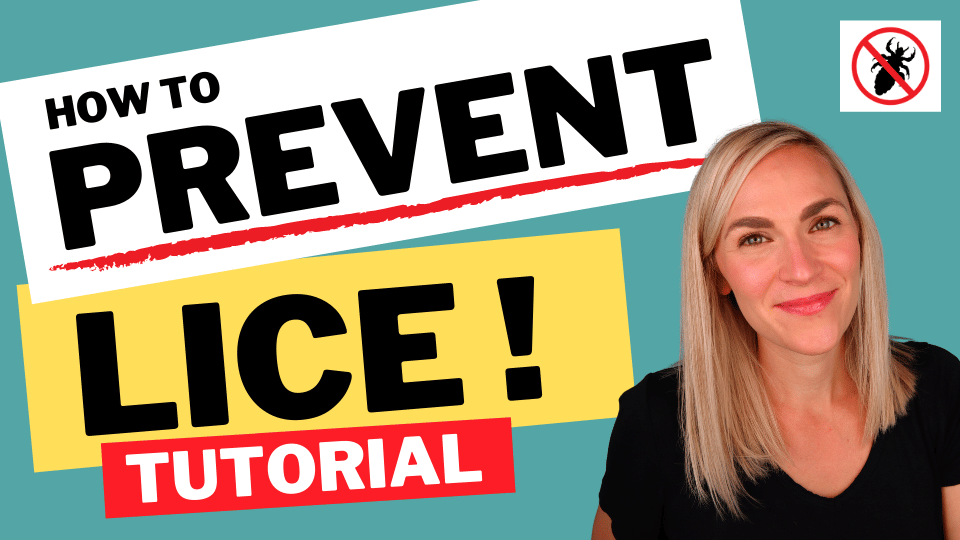
Reason #7
You’re Getting It Back From Your House
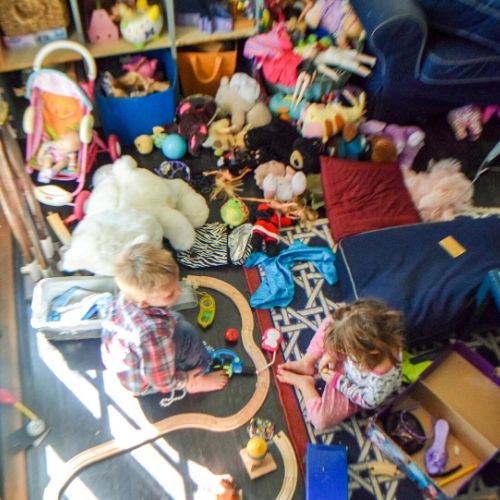
Generally speaking, lice stick solely to the head; they don’t hang out on your furniture, waiting to crawl on you. Lice must feed frequently on your blood in order to survive. Usually, the only times lice leave a head are if they are switching to another head or they are dying.
If by chance a single bug does fall off your head and onto your furniture, they cannot live long. After too long without a blood meal, they dehydrate and die. Lice can not live more than two days off the head.
Although the chances of getting lice back from your home are pretty small, you will still want to take precautions. Grab the lice cleaning checklist for your house below. It's free.
Mayonnaise & The Never-Ending Cycle
Most people that use lice kits and home remedies get caught in the horrible "Never-Ending Cycle of Lice"

First- You Have Lice
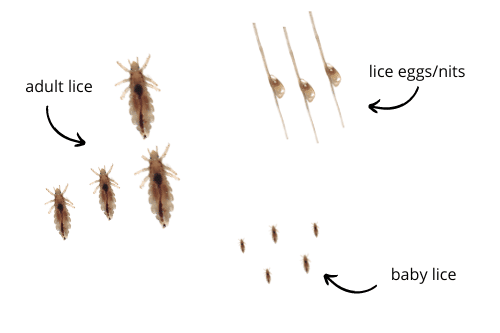
When you first discover lice you have adult lice bugs, baby lice bugs, and lice eggs (also known as nits)
You Think You've Gotten Rid of It.
But...
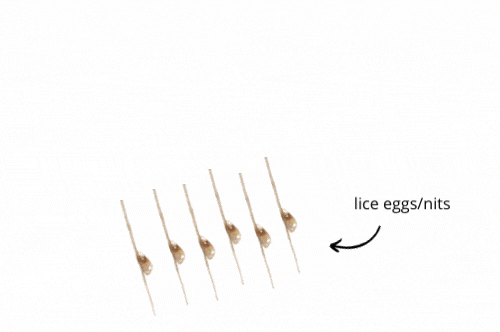
After using an over-the-counter treatment or a home remedy, people think they've taken care of the problem because they aren't finding lice bugs for a while.
But the bigger problem is the lice eggs that are left in the hair. Lice kits and home remedies don't kill eggs, and each of those little lice eggs has a bug inside just waiting to hatch and re-infest your child again.
Then- Those Eggs HATCH!

Just like lice eggs are tiny, when lice first hatch they are teeny-tiny. In fact, they are almost invisible to the naked eye! So, it typically takes a few weeks for them to grow big enough for you to see them.
And by the time you notice your head is infested all over again!
And Lice Is Back Again!
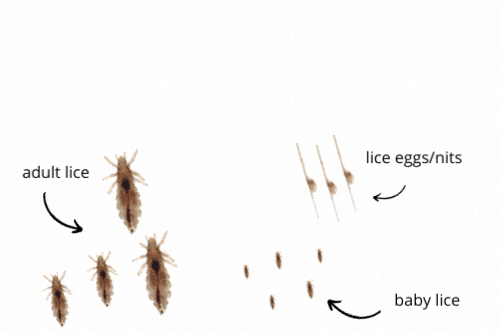
How to Avoid the Never-Ending Cycle
If you want to avoid this never-ending cycle and get rid of lice fast then check out my Step-by-Step Video System. Follow along with the videos and you can be completely done with lice in ONE DAY, no retreatments necessary.
If you choose to go another route...
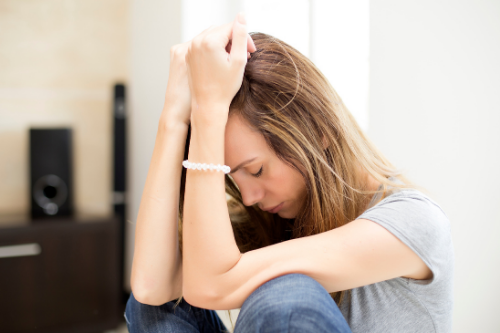
Lice is horrible, and no one should have to endure it for months on end. And I hope you don't.
Many people go from lice kit to lice kit and then from home remedy to home remedy. They think it's gone for a week or two, and then it comes back again.
I created the My Lice Advice Video System so you can avoid struggling with lice for months, instead, just follow along with the videos and be done with lice by the end of the day!
How to be lice-free by the end of the day...

GET THE VIDEO SYSTEM
Get rid of lice the same way the experts do. Your personal lice coach walks you through each step of doing a professional lice treatment at home in a series of videos.

FOLLOW ALONG
Follow along with the videos on your child in your home. No lice kits or toxic chemicals involved!

BE DONE WITH LICE!
When you're done with the videos, you're done with lice. And it's gone permanently!
Summing It Up...
When websites and products tell you that you aren't getting rid of lice because you're misusing the product or aren't cleaning your house thoroughly enough, please don't believe them. The truth is that lice today are extremely resistant, and lice treatments don't kill all of the lice or lice eggs.
The top 7 reasons you keep getting lice back are:
- You have super lice
- You're missing lice eggs/nits
- It's spreading in the family
- You're timing is wrong
- You're getting it from close friends
- You're getting it from school
- You're not sure how to clean your house
To get rid of lice for good, return that popular lice treatment from years past, and check out my step-by-step video system.
All the best!
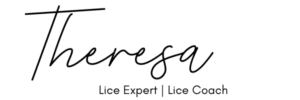

Theresa is a Registered Nurse and lice expert with years of experience curing children of lice. She owns a lice treatment center in the US which is where she perfected the Step-by-Step Video System proven to get rid of lice. She also works with government agencies and schools helping those with the worst head lice cases in America.
Her greatest passion is empowering parents by teaching parents online how to do a professional lice treatment on their child at home. She is the Lice Coach for the My Lice Advice Step-by-Step Video System.
